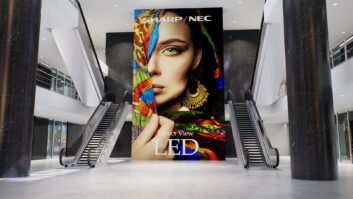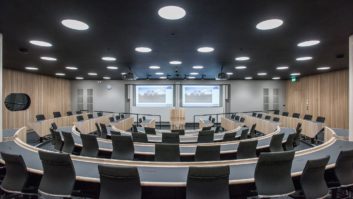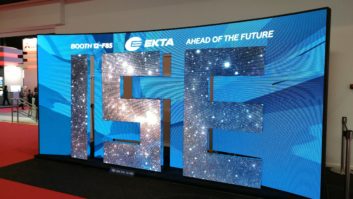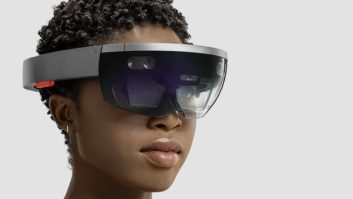
The recent advancement of projection mapping into broader AV sectors has got as much to do with the advancement of other related technologies as it has to the art of mapping hardware and software itself.
These days, projection mapping’s servers and software are capable of real-time content manipulation, so combining mapping with tracking technology (auto-mapping using lasers and camera) makes it possible to map dynamic content onto a moving target – for instance mapping onto a car that’s rotating 360°.
3D scans are allowing for more accurate alignment and content creation, with 3D design tools enabling pre-visualisation and software packages aligning multiple projectors using machine vision cameras at the click of a button. (Indeed, precise edge-blending is now available via one-box hardware solutions too.)
Stable and efficient
Interactivity via sensors and cameras means even more audience engagement, with interactive devices becoming more and more stable and efficient, and augmented reality becoming more sophisticated.
These developments in AR are leading to true mixed reality experiences, with this burgeoning fusing of physical and virtual content creating dynamic digital canvases offering unique, personalised experiences laid on top of larger scale shared physical experiences.
At the same time, the integration of kinetic system controls, from lifting systems to production robots (robotics now a big influence for mapping), allow real-time displays linking to sensors and actuators in order to establish live systems. This allows complex mapping to be calculated live on a kinetic system, which is triggered individually by actors.
Huge impact
Visual experiences are becoming bigger, incorporating larger arrays of projectors as well as other display devices such as LED video panels and pixel-mapped lighting effects – having a huge impact on pixel count and data capacities. Lighting effects are being used as a cost effective method of expanding the scale of the projection mapping experience – pixel mapped to extend the digital canvas and become part of the screen.
A downside of this up-scaling in the scope of mapping projects is that pre-rendered content is becoming more costly, less flexible and less practical.
Thankfully, the use of real-time render engines from the computer gaming industry is pushing innovation in this area, allowing mapping artists to deal with larger and larger pixel canvases, and also harness the power of real-time generative content that can react to external data, control and interaction. Real-time creation systems also have a huge influence in the current creation and distribution processes for video mapping.
Powerful data-hungry media servers such as disguise – a software on hardware solution – and new real-time render engines are starting to power projection mapping content, facilitating an increase in interactive technologies and live data that is driving projection mapping experiences.
Immersive audio and object-based audio are also important trends. When combined with audio, projection-mapped storytelling can become even more immersive.
“The new generation of projectors are making a huge difference to the efficiency and quality of mapping”
Better equipped
When it comes to the projectors themselves, lens evolution has helped to create brighter, pixel-rich, faster projection. The new generation of projectors with separate light sources – waterproof, compact, powerful – are making a huge difference to the efficiency and quality of mapping. RGB and laser technologies are easier to maintain, are more compact and more cost effective.
However, while projectors are also becoming more maintenance-friendly and more durable in continuous use – as well as being better equipped to deal with ambient light – they’re still not suited to bright environments where the lighting conditions can’t be controlled. LED is often preferred as a result.
In addition, mapping depends on extreme accuracy – which cannot be maintained in the long run due to external physical influences (including changes in temperature). Automatic calibration systems help, of course, but humans are still – for now – necessary for the fine-tuning.
So perhaps there is still some work to be done in terms of technology innovation in order to fully shake off that guerilla marketing tag; and in some circumstances other technology, such as LED, should be used to complement projection mapping rather than enhancing it.
What’s certain is that projection mapping will continue to develop as a very powerful tool for delivering a message, engaging an audience or transforming an environment. And with other technologies adding rocket fuel to its development and acceptance, mapping will continue to cross industry sectors and reach more and more people.







